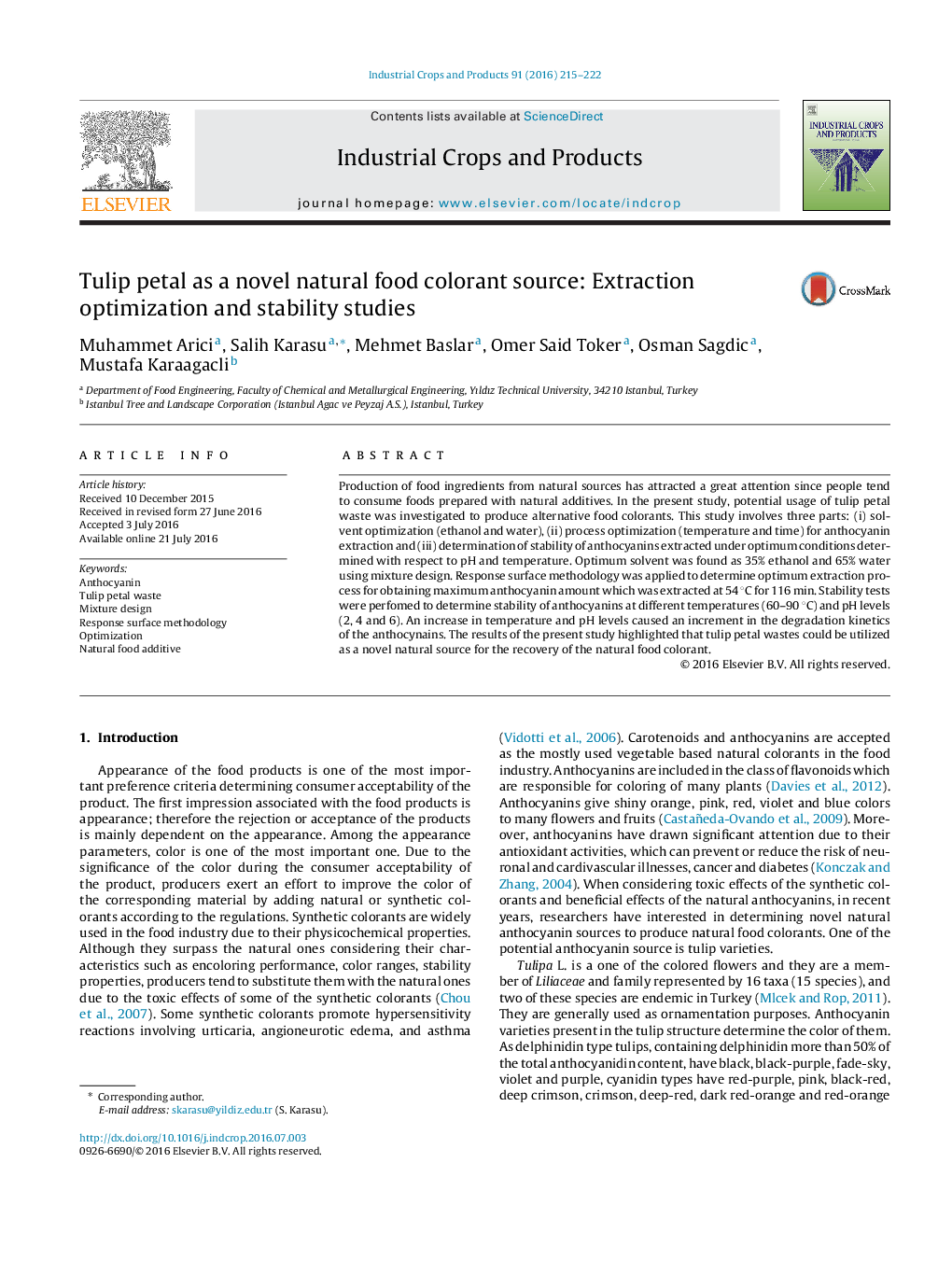| Article ID | Journal | Published Year | Pages | File Type |
|---|---|---|---|---|
| 4511976 | Industrial Crops and Products | 2016 | 8 Pages |
•Tulip petals waste is a good source of anthocyanin.•Extraction yield of anthocyanin was significantly affected by solvent ratio and processing conditions.•Tulip anthocyanins can be used in food products as a natural colorant regarding pH and heat stability.•Anthocyanin extracted from tulip petals could be used as a natural dye in textile, pharmaceutical and food industry.
Production of food ingredients from natural sources has attracted a great attention since people tend to consume foods prepared with natural additives. In the present study, potential usage of tulip petal waste was investigated to produce alternative food colorants. This study involves three parts: (i) solvent optimization (ethanol and water), (ii) process optimization (temperature and time) for anthocyanin extraction and (iii) determination of stability of anthocyanins extracted under optimum conditions determined with respect to pH and temperature. Optimum solvent was found as 35% ethanol and 65% water using mixture design. Response surface methodology was applied to determine optimum extraction process for obtaining maximum anthocyanin amount which was extracted at 54 °C for 116 min. Stability tests were perfomed to determine stability of anthocyanins at different temperatures (60–90 °C) and pH levels (2, 4 and 6). An increase in temperature and pH levels caused an increment in the degradation kinetics of the anthocynains. The results of the present study highlighted that tulip petal wastes could be utilized as a novel natural source for the recovery of the natural food colorant.
